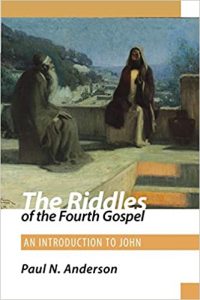É razoável dizer que há mais discordância dos pesquisadores sobre os cinco escritos joaninos – Evangelho, Cartas e Apocalipse – do que sobre qualquer outra área do Novo Testamento. Mas isso é compreensível.
Considere, por exemplo, as tensões teológicas de João – a humanidade e a divindade de Jesus; a relação igual e subordinada do Filho com o Pai; o Espírito procede do Pai e do Filho; tensões sobre escatologia, milagres, salvação, judaísmo e eclesiologia, para citar alguns.
E o que dizer dos enigmas históricos de João – tensões entre o mundano e o transcendente; omissões de João de material sinótico e omissões sinóticas de material joanino; diferenças na cronologia e topografia entre João e os sinóticos; o Jesus de João não está falando em parábolas, e o Jesus sinótico não está dizendo “eu sou”; o Jesus de João (e o Batista) falando no idioma do narrador?
Além disso, considere as perplexidades literárias de João – a linguagem e a forma poética de Jo 1,1-18 estão mais próximas de 1Jo 1,1-4 do que o resto do Evangelho; às vezes, os eventos são anunciados antes de serem narrados; Jesus diz: “Saiamos daqui” em 14,31, mas os discípulos não chegam ao jardim até 18,1; Jo 20,31 declara o propósito de ter escrito, mas o capítulo 21 parece ter sido adicionado mais tarde; referências à testemunha ocular (19,34-35) e ao autor (21,20-24) parecem ter sido feitas por outra mão.
Esses são apenas alguns dos enigmas intrigantes de João que os estudiosos trabalham com afinco para resolver.
It is fair to say that there may be more disagreement over the five Johannine writings (the Gospel, Epistles, and Apocalypse of John) than any other sector of the New  Testament. But this is understandable. Consider, for instance, John’s theological tensions—the humanity and divinity of Jesus; the Son’s equal and subordinate relation to the Father; the Spirit’s proceeding from the Father and the Son; tensions over eschatology, miracles, salvation, Judaism, and ecclesiology, to name a few. And, how about John’s historical conundrums—tensions between the mundane and the transcendent; John’s omissions of synoptic material and synoptic omissions of Johannine material; differences in chronology and topography between John and the Synoptics; John’s Jesus not speaking in parables, and the synoptic Jesus not uttering “I-am” sayings; John’s Jesus (and the Baptist) speaking in the language of the narrator? Further, consider John’s literary perplexities—the language and poetic form of John 1:1-18 is closer to 1 John 1:1-4 than the rest of the Gospel; sometimes events are announced before they’re narrated; Jesus says, “Let us depart” in 14:31, but the disciples don’t reach the garden until 18:1; John 20:31 declares the purpose for having written, but chapter 21 appears to have been added later; references to the eyewitness (19:34-35) and the author (21:20-24) appear to be made by another hand. These are just some of John’s puzzling riddles that scholars work vigorously to address.
Testament. But this is understandable. Consider, for instance, John’s theological tensions—the humanity and divinity of Jesus; the Son’s equal and subordinate relation to the Father; the Spirit’s proceeding from the Father and the Son; tensions over eschatology, miracles, salvation, Judaism, and ecclesiology, to name a few. And, how about John’s historical conundrums—tensions between the mundane and the transcendent; John’s omissions of synoptic material and synoptic omissions of Johannine material; differences in chronology and topography between John and the Synoptics; John’s Jesus not speaking in parables, and the synoptic Jesus not uttering “I-am” sayings; John’s Jesus (and the Baptist) speaking in the language of the narrator? Further, consider John’s literary perplexities—the language and poetic form of John 1:1-18 is closer to 1 John 1:1-4 than the rest of the Gospel; sometimes events are announced before they’re narrated; Jesus says, “Let us depart” in 14:31, but the disciples don’t reach the garden until 18:1; John 20:31 declares the purpose for having written, but chapter 21 appears to have been added later; references to the eyewitness (19:34-35) and the author (21:20-24) appear to be made by another hand. These are just some of John’s puzzling riddles that scholars work vigorously to address.
Leia “On Biblical Forgeries and Imagined Communities—A Critical Analysis of Recent Criticism” – The Bible and Interpretation: April 2020
By Paul N. Anderson – George Fox University Newberg, Oregon
Confira também
ANDERSON, P. N. The Riddles of the Fourth Gospel: An Introduction to John. Minneapolis: Fortress Press, 2011, 312 p. – ISBN 9780800604271.
